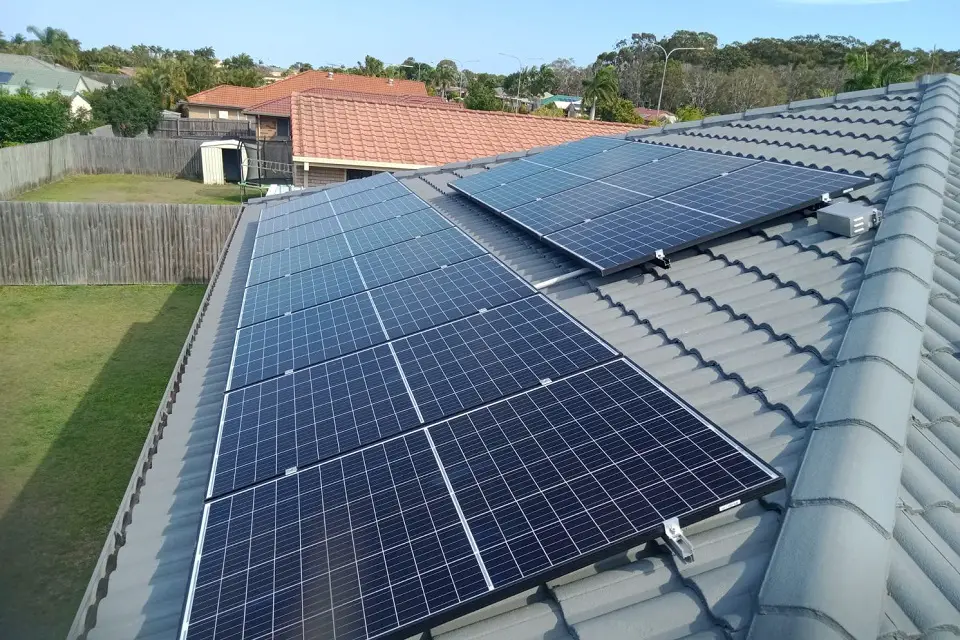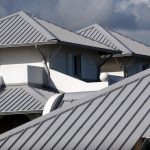Solar energy is one of the fastest-growing energy sources globally. The technology has seen numerous improvements over the years; currently, solar panels produce more power than ever before.
One of the hurdles of solar energy is efficiency, the ratio of energy output versus energy input from the sun. Low-efficiency panels that flocked the market before made solar an expensive alternative that was elusive to an average homeowner. However, new technology has made the system affordable and efficient. As a result, many roofs across urban and rural areas don solar panels.
The efficiency of a solar panel depends on the type of solar panel, the technology used in the system, and other environmental factors. For the latter, temperature and solar exposure have the most significant impact on efficiency.

Why does temperature matter?
Solar panels produce energy from sunlight through photovoltaic technology. The technology uses photons to stimulate semiconductors’ electrons to produce electrical energy. With this simple explanation, it’s easy to understand why most people assume more sun means more power.
However, there is more to it. Aside from light, the sun also puts out a lot of heat. Unfortunately, heat stimulates photons without any electrical yield leading to low energy efficiency. This can be described with the temperature coefficient (a measure of efficiency loss with every temperature change).
When does temperature matter?
The temperature coefficient takes effect once temperatures deviate from the optimal 25 degrees celsius. The optimal temperature varies between manufacturers, but most panels in Australia are tested at 25.
If you want to know the temperature coefficient on your panel, just look at the manual. For most panels, the value ranges from -0.20 to -0.50. Therefore, if your panel has a temperature coefficient of -0.2, it loses 0.2% efficiency with every degree of temperature above 25°C.
For example, if the temperature outside is 30 degrees celsius, the total loss in efficiency will be 1.0% (0.2 multiplied by 5, which is 30-25)
How do the solar panels get hot?
Most solar panels can withstand extreme temperatures; however, they can overheat. It depends on the type of solar panels, design, outside temperatures, and positioning.
Dark-colored designs retain heat and can easily surpass the optimum temperature. Moreover, silicon and metal components heat up fast. As a consequence, warm climates are detrimental to such panels.
How to reduce the effect of heat on solar panels
Although there isn’t much that can be done to eliminate the effect of heat on solar panels, you can take a couple of steps to minimize the temperature gradient.
Roofing color
One of the rules in thermodynamics is that dark colors retain heat while light colors reflect it. Therefore, fitting light-colored materials on your roof is sure to reflect heat away from your solar panels. The effect is apparent in warm areas like the tropics.
Placement
How you install your solar panels has a lot of bearing on the cooling of the panels. For example, leaving space between the panels and the roof surface allows air circulation and enhances cooling. Most manufacturers leave approximately six inches for optimum air circulation.
Cooling systems
Since heat is unavoidable, manufacturers have developed cooling systems as adjuncts to the solar system. Water cooling systems are the most predominant option. The system is effective and relatively inexpensive to include in the design of the panels.
Unfortunately, water cooling systems are mostly used in solar farms. The system uses a series of pipes fitted at the top of the panels to spray water on the surface.
One of the latest advancements is a ‘sweat’ system that sucks moisture from the air to cool down the panels, similar to how we cool from sweating. However, this technology is being researched and developed.
Related Posts
Cold climates
Although people assume cold areas are not ideal for solar installations, they may provide the best conditions. The caveat is that there must be enough sunlight. Although temperature changes affect the efficiency of a solar panel, cool temperatures don’t.
Shade
Knowing that high temperatures are bad for your solar panels, you may be tempted to place them under a shade. Unfortunately, this is worse. Solar panels need sunlight, and anything that reduces the intensity of light on the panels reduces the overall energy output.
Therefore, when installing your solar panels, ensure they are positioned in areas with maximum exposure to sunlight. Avoid areas with tall trees and tall buildings.
If you are lucky to live in an area with long solar hours, you will enjoy more output from your solar system.
Why choose solar?
Despite all the setbacks with heat and sunlight exposure, solar remains one of the fastest-growing energy sources. It’s inexpensive since the sun is available to everyone on earth. The supply is plentiful, and we only utilise less than 10% of the solar energy.
Additionally, new technologies employed in the designs have made the system efficient and available to everyone. You no longer need a large solar farm to power a small residence. Instead, you can easily get by with a small, simple system.
Moreover, solar allows homeowners to set up at off-grid locations. This means you can build on your desired view or enjoy the privacy you seek in remote areas.
Now that our carbon footprint from energy production is apparent, transitioning to renewable sources like solar is a step towards preserving our planet.
What is available
There are different types of solar panels in the market. Each has unique specifications designed to perform at high efficiency and yield maximum energy. Before making your pick, it’s crucial to find out what will serve your needs.
For example, if you reside in a warm area, a low-temperature coefficient on the solar panel is something worth chasing. However, if your area’s temperatures are usually low, you can consider other specifications like the energy output.
All in all, you cannot go wrong with solar energy. There are many benefits to reap from the installation, and there is still more to come.





